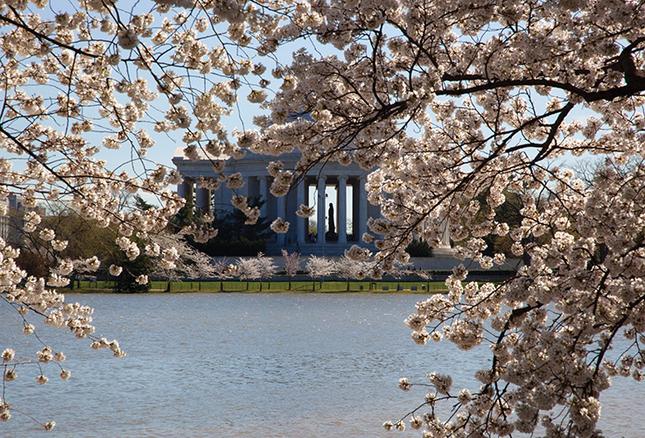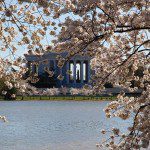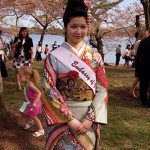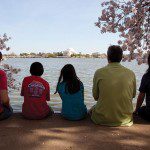While traveling in Japan in the 1880s, writer and socialite Eliza Ruhamah Scidmore was impressed with how the magnificent flowering cherry trees were regarded as sacred in Japanese society. Much taken with their beauty, she started her one-woman campaign with the Japanese government to send some of these trees to Washington, D.C., to be planted along the Potomac River. It took 30 years and many mishaps, some of which reached the level of breaches in diplomacy, before her dream was realized.
After Eliza got things started, negotiations between Japan and the U.S. ensued and kept faltering, until First Lady Helen Taft heard about it. Mrs. Taft had lived in Japan when her husband was president of the Philippine Commission, and she responded immediately to Eliza Scidmore’s letter suggesting that cherry trees would beautify the riverfront. Helen Taft was the same person who once described Washington as “a mosquito-infested swamp and a rendezvous for tramps and criminals,” so she was anxious to do what she could to improve the looks of the capital city.
Ninety trees were immediately planted, but these were found to be the wrong variety and they were dug up and taken away. Then, in 1909, a shipment of 2000 trees arrived as a gift from the government of Japan. However, when the Department of Agriculture inspected the trees, they found them to be disease-infested and the president himself ordered the whole shipment to be burned. An exchange of letters followed, with the Japanese ambassador apologizing for the terrible mistake.
Next, a wealthy Japanese doctor stepped forward and offered to personally pay for cherry trees to be sent to Washington in the name of the city of Tokyo. The second shipment of trees came from Japan, and this time they were specially grafted to be disease-free. The 3,020 trees were planted along the banks of the Tidal Basin, and they became an instant success. Fifty years later, when Lady Bird Johnson began establishing mini-parks and flower gardens around the city, the Japanese government gave President and Mrs. Johnson another gift of 3,800 trees, which were planted on the grounds of the Washington Monument.
The trees have had their ups and downs. In 1938, during construction of the Jefferson Memorial, workers started to clear some of the trees for the construction site, and an angry group of women protested by chaining themselves to the trees to stop them from being destroyed. The government intervened and promised to replace any trees that had to come down. These trees are high maintenance, too. Some only last about 50 years, so the government is constantly replanting to make up for the ones that die. Then, the giant snowstorms of this past February wreaked havoc by breaking limbs and demolishing whole trees. But, the clean up went quickly and all is well again as we once more celebrate the Cherry Blossom Festival, a hometown favorite and huge tourist attraction.
Back in 1912, when those historic 3,020 trees were planted by the new Japanese ambassador’s wife, Viscountess Chinda, and Helen Taft, the ambassador had proclaimed on his way from Japan to Washington that, “Almost all the world is at peace today, and will be at peace for thousands of tomorrows. War has had its day.”
However, his prediction proved to be quite the opposite and, during World War II, our government took to calling the flowering trees “Oriental” instead of Japanese. But beauty makes a strong statement, and the cherry trees, or Sakura, as they are called in Japan, represent both rebirth and the fragile nature of existence — welcomed symbolism and a humbling reminder in our nation’s capital.
Head to the Tidal Basin and National Mall for the National Cherry Blossom Festival through April 11. Visit www.nationalcherryblossomfestival.org for more information.
- Jeff Malet
- Jeff Malet
- Jeff Malet





